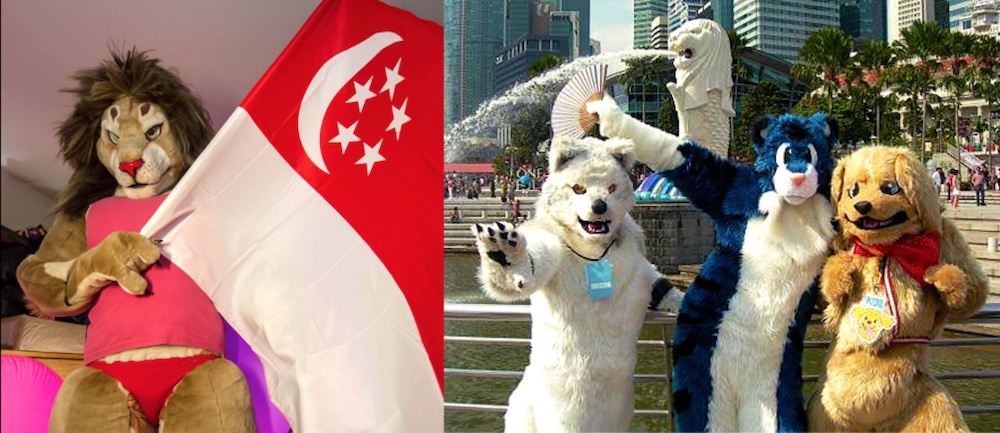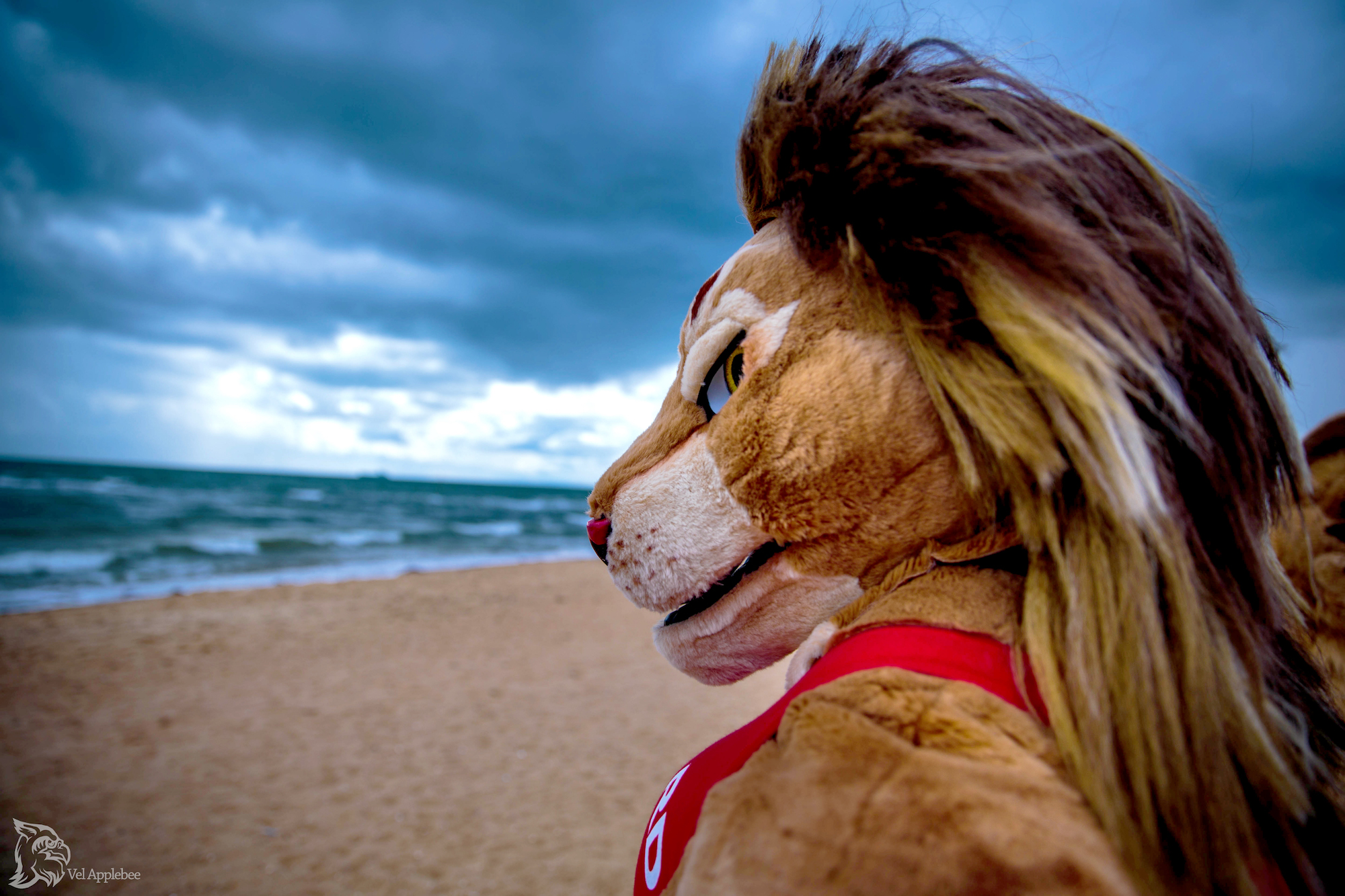Story by Juliette Yu-Ming Lizeray; Editing by Benita Lee, Ilyas Sholihyn
Circle of life
It’s just another quiet Wednesday night. Two lovebirds stroll arm-in-arm along the Jubilee Bridge. Across the waters, the final few green laser beams of Marina Bay Sands’ light show streak across the night sky. The rest of Singapore prepares to head to bed.
Except not quite.
Saturday Night Band’s disco classic “Let’s Make it a Party” suddenly rings through the air, and a bafflingly huge bipedal man-lion leaps forward.
If the Merlion were alive, it might have momentarily paused its endless regurgitation to catch a glimpse of its half-kin.
Not a merlion, but a furlion. Snares showing us his moves. Video: Snares Low
At almost two meters tall, the fuzzy feline cuts an imposing, majestic figure. He’s wearing a tight-fitting red lifeguard uniform, complete with briefs stretched taut over a brazen bulge. His — or rather, the costume’s — musculature makes most bodybuilders look like underfed vegans.
He begins to dance. Swivelling his paws up over his head and to the side in waacking fashion. His rear paws bob to the beat. His long tail idly tickles the sidewalk. A plastic whistle dangles from a gold chain bounces between a pair of swole pecs.
Say hello to Snares Low.
He is a furry.
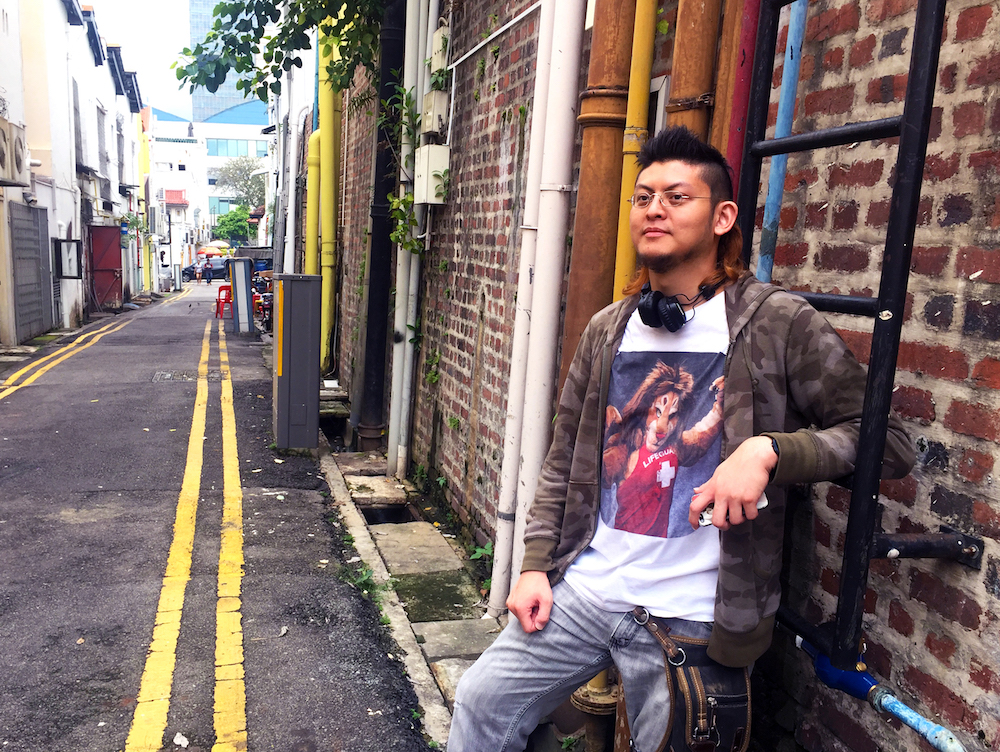
Ever since he was wee lad, Snares always had a thing for The Lion King’s Simba. “All kids like talking animals — but I guess I never grew out of it”, Snares grins gingerly.
Like Simba, the origin story of Snares is not without heartbreak. After a series of family tragedies led to a vicious cycle of self-destruction and depression, he found solace in the furry community, who helped him find his “true self.” He hit rock bottom, and for him, there was only one way up — he decided to reinvent himself by honouring his long-standing affinity for Simba and by creating his very own lion “fursona” (aka furry persona).
“I wanted him to be a life-guard to remind me of how he saved me from drowning”, he explains. And that was how Snares the lion was born.
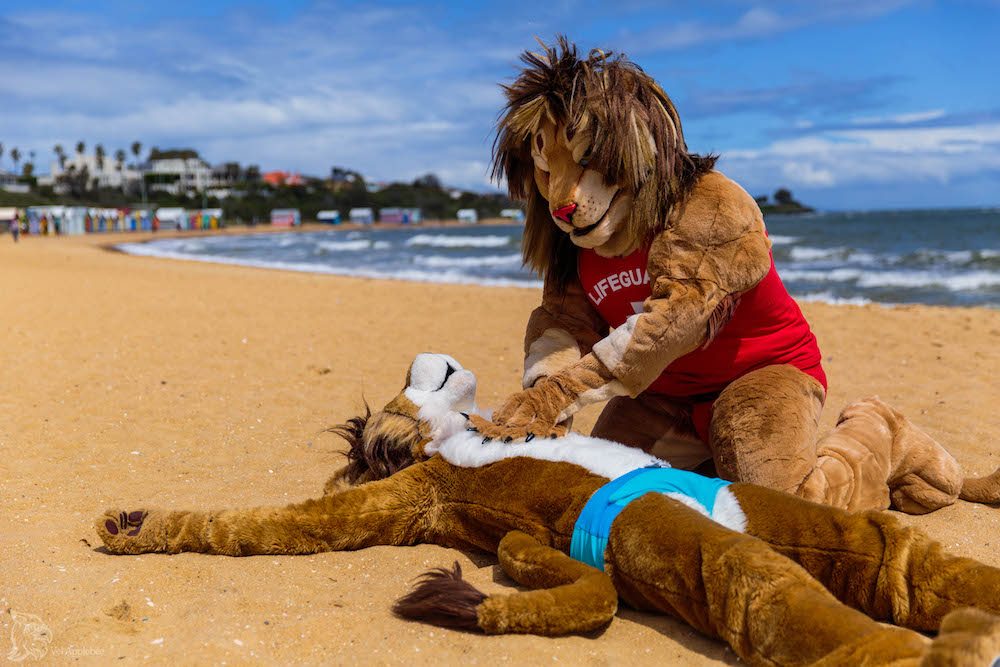
What the fur is a furry?
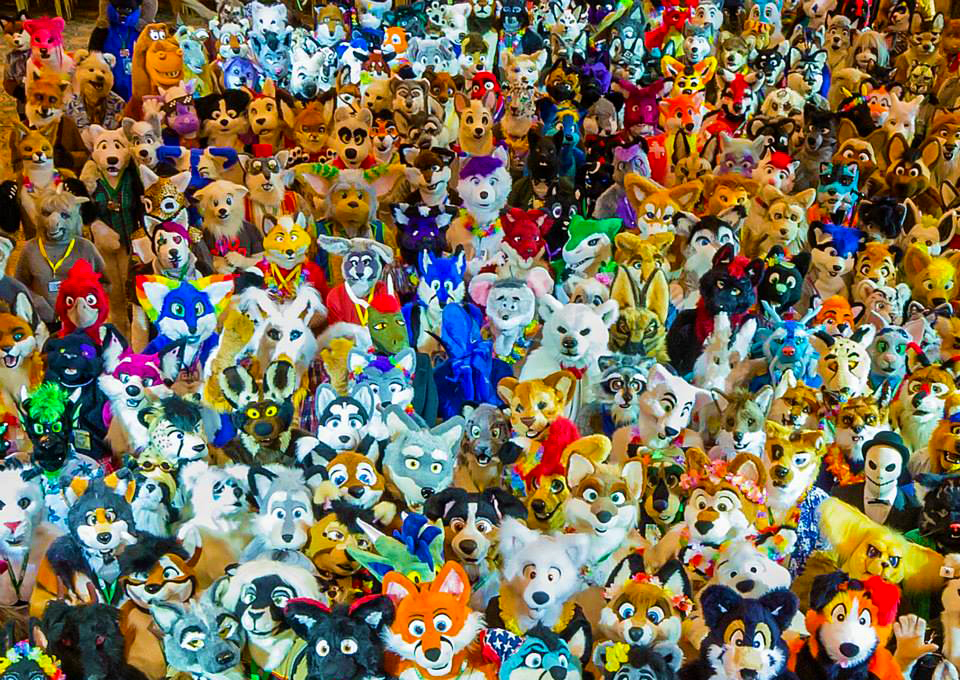
While some of us are into stamp-collecting, or football, or even collecting airplane barf bags (yes, this is a hobby), a small community of people who identify themselves as Furries hold an affinity for anthropomorphic animals. In other words, they’re really into animals with human characteristics or behaviour.
At its core, being a Furry is about putting on another character or persona. In this case, that of a fuzzy animal. “Being a furry is no different from people who are really into cosplay or sci-fi fantasies or even dress up as clowns,” explains Hollud, the PR guy for SG Furs — the biggest community group for furries in Singapore.
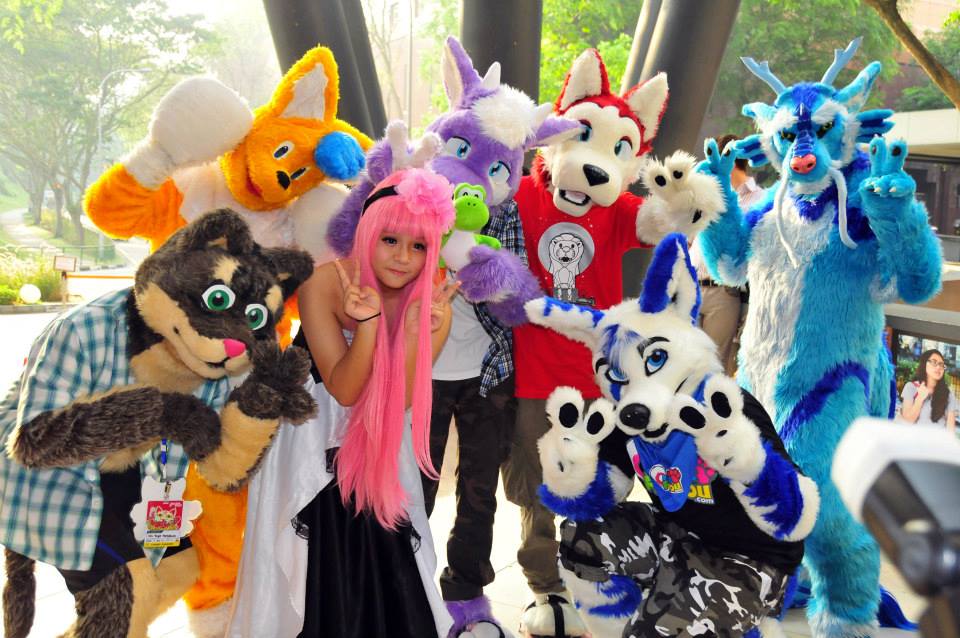
Let’s be clear – being a furry is not about sex with soft toys, or actual animals, for that matter. Yes, there are those who have furry fetishes or are into furry porn (NSFW, we warned ya), just as some anime fans are into hentai, but a minority doesn’t represent the entire community.
At least in Singapore, the furry community is quite adamant about being family-friendly.
In fact, SG Furs vets any newbies who wish to join them by ensuring they are at least 18 years of age, and that their wish to participate isn’t driven by any sexual kink, but a desire for innocent fun and friendship.
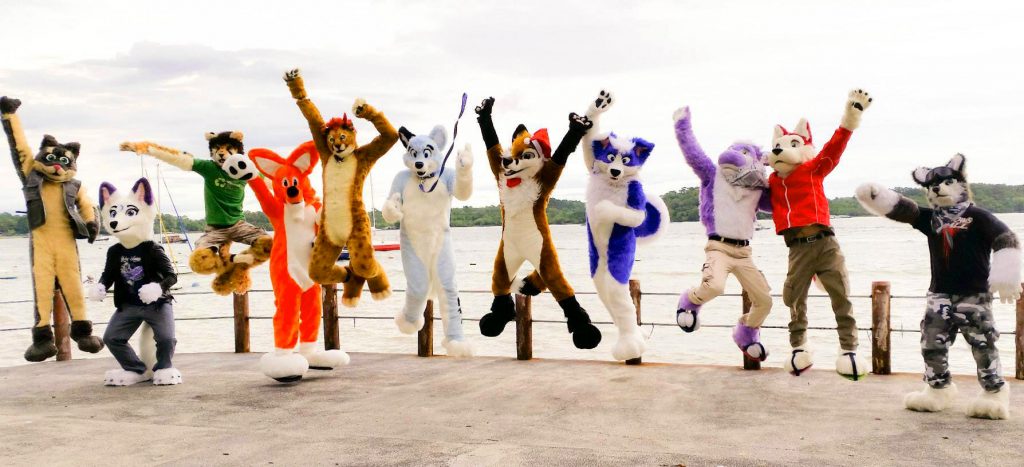
According to local furs, being a furry is really about creative self-expression. As opposed to bringing to life something preexisting that someone else created in books, comics or TV shows, furries craft their own fursonas, complete with physical attributes, personality and backstory.
While the majority tend to be canine or feline, furries can choose any kind of animal — bears, horses, birds and reptiles are quite popular, too. They can also be hybrids (think mind-boggling ones like spider-wolves or dragon-squids) or fantastical beasts such as dragons and unicorns.
Occasionally, anthropomorphic objects, such as human-plane hybrids, can be spotted at furry conventions (try Googling “aeromorphs” or “anthro-planes”). As you can tell, the boundaries of the furry fandom are rather porous – what matters most is whether an individual self-identifies as a furry or not.
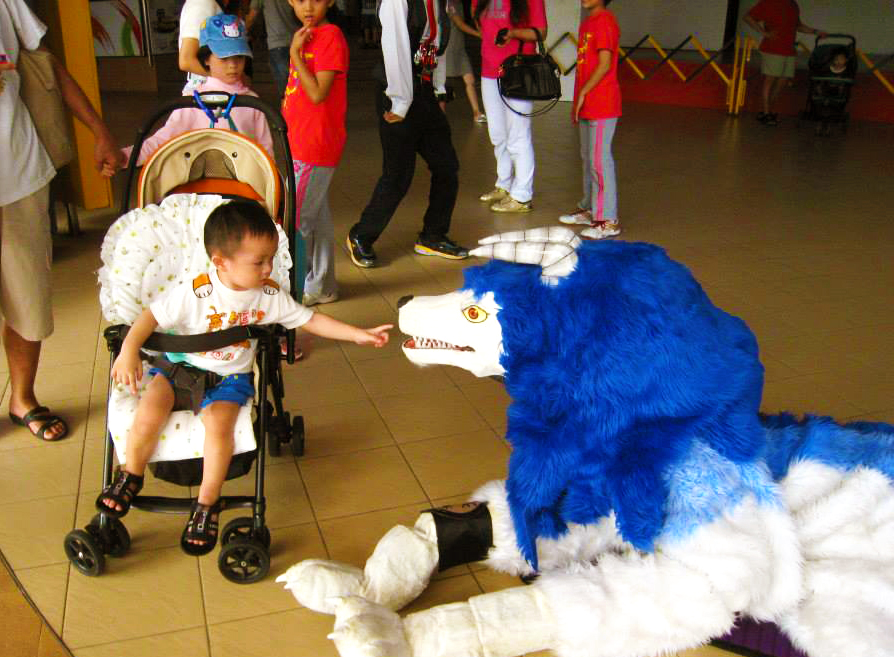
A large part of the fandom’s appeal lies in the possibility of escapism through fantasy. Having a safe space to create imaginary beings provides healing and coping mechanisms for people going through rough times or those trying to find themselves. You can essentially escape your ‘usual’ self for a moment and become whoever you want to be.
It’s also about self-reinvention. Hollud, a building manager by day, developed his equine fursona a few years back when he decided the horse perfectly embodied the virtues he admired most: grace and strength. Finding traits you identify with — like the wisdom of an owl or the cunning of a fox — and embodying them through a fursona can therefore be a positive, empowering process of self-discovery (or “discofurry”).
That said, there exists a very small subset of people within the furry community called Therians or Otherkin, who actually believe they are non-human spirits trapped in a human shell. Though it’s rare, Hollud cautions, “It’s important to dissociate fantasy from reality. Some people, especially the younger ones, can mix them up.”
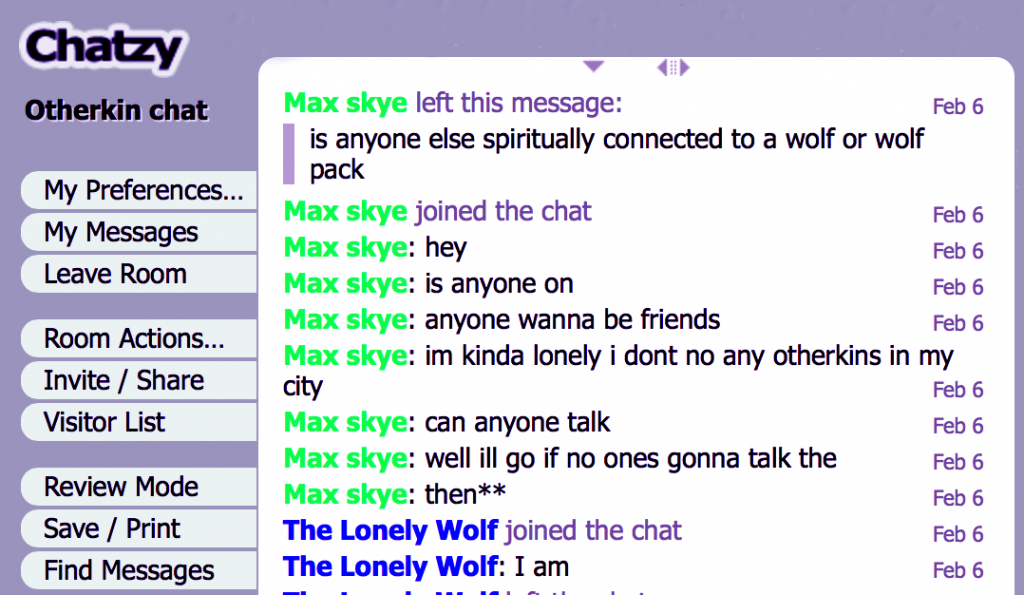
Singapore is a fine (and furry) city
Most Singaporeans are unaware of the very existence of our country’s furry fandom.
Indeed, furry insiders estimate there are only between 50-70 furries on our sunny island, including the furs currently living overseas (AKA “furexpats”).
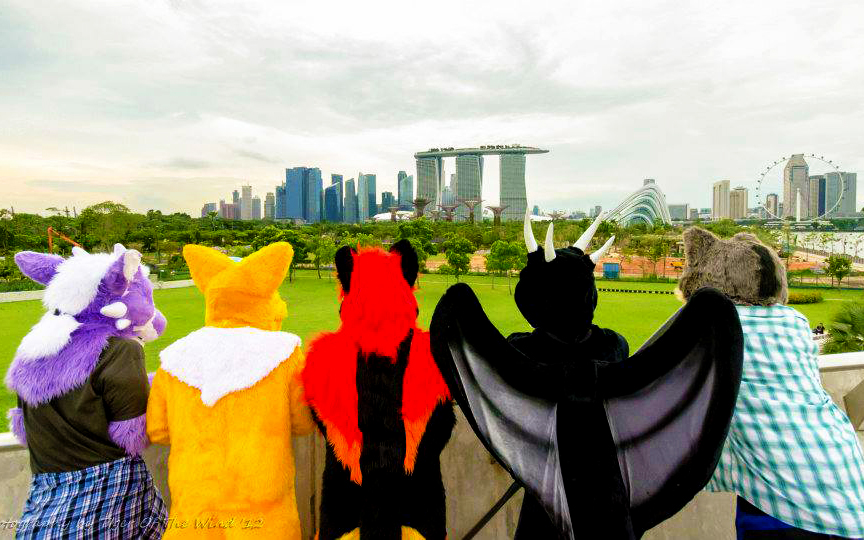
That’s not too surprising, because local furs tend to keep a very low profile. Negative portrayals of furries in mass media have prompted the tendency for secrecy — many do not wish to “come out” as furries for fear of family members and colleagues dismissing them as childish, or worse, labelling them as sexual deviants.
“Just put your paws up, cuz you were born this way, baby.” Local furries groovin’ at SGFurs’ 2015 “Furlay”. Video “Born This Way” by Hollud.
If you prod deeper, you’ll realise that Singapore’s furry ecosystem is as varied as the animal kingdom. There are those who wear the suits (known as “fursuiters”) like Snares, people with fursonas who don’t don the costumes (in Hollud’s case), furry art creators (including but not limited to adult content), furry art consumers (including but not limited to adult content) and fursuit makers.

Even though it’s typically male, with members ranging from their teens to their early-thirties, Singapore’s furry community has a few notable female furs.
One of whom is 21-year-old polytechnic student Shu Xian who calls herself Kiba (or Kiba-Wolf). An active member of SG Furs, she’s a self-taught fursuit-maker who transformed her tiny Tiong Bahru HDB room into a full-blown costume workshop.
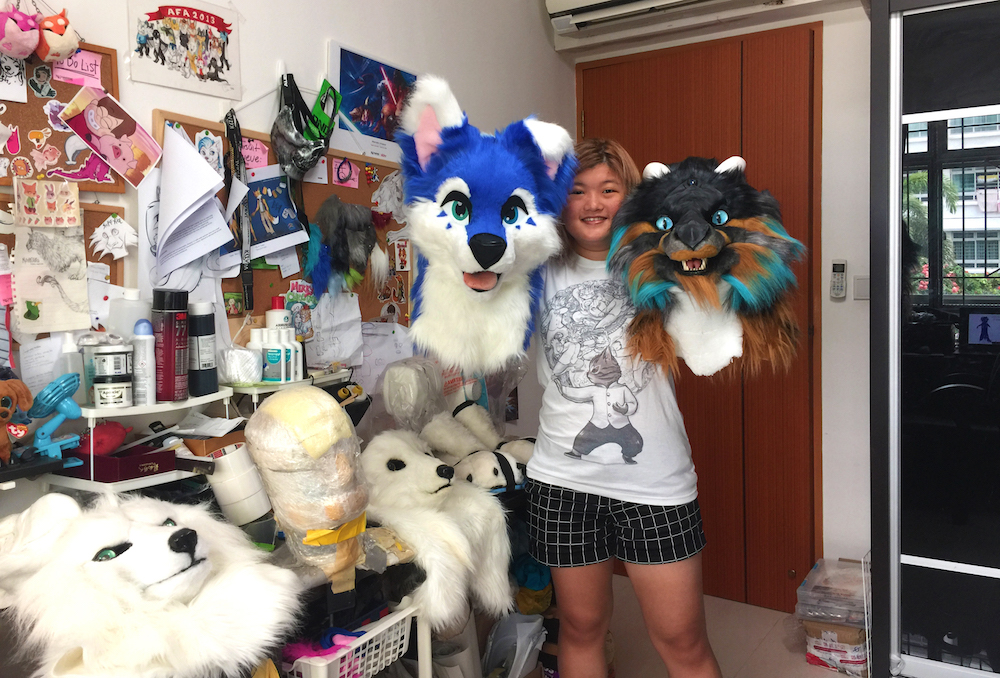
The space is crammed full of craftsman’s tools, animalistic appendages and fuzzy creatures in various stages of completion. There are puffy paws fitted with flip flops, a scaly leather dragon head with a sardonic smirk, glinting resin eyeballs, assorted mandibles, sketches for commissioned fursuits, multicoloured swaths of fur… you get the picture.
As she rummages through her creations in search of a misplaced werewolf ear, Kiba exclaims, “The best part of my work? Definitely when my client wears the fursuit and I see it come alive!”

Since she started taking on commissions in 2014, Kiba has made ten full fursuits – each one takes her several months to complete, as she can only work in her spare time. Despite being a highly sought after fursuit-maker, the talented lady says that only a few of her schoolmates are aware of her business.
Close encounters of the furry kind
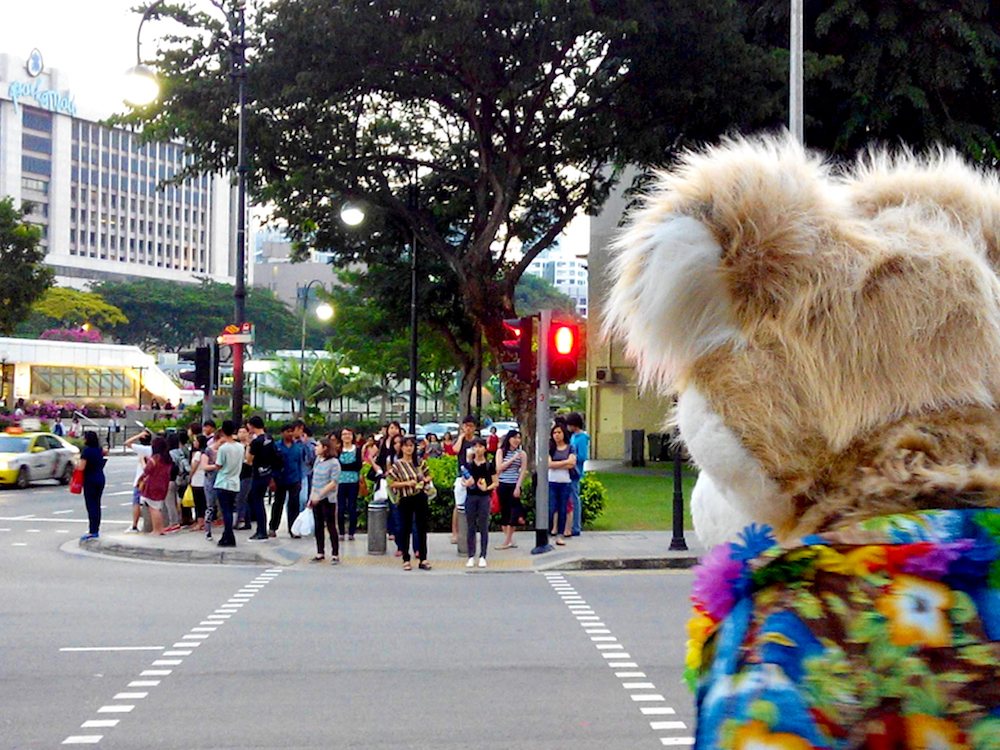
So, given their secretive instincts and low population count (nearing endangered status!), what are the chances of a furry sighting in Singapore, you ask?
Truth is, furries don’t have that many opportunities to strut their stuff on the streets. In a post-9/11 world, ambling about in a giant fursuit in public means you can be deemed a terrorist risk. You’re likely be tackled onto the ground by some SWAT bro who definitely ain’t role-playing.
But public displays of furriness do happen – under the auspices of two conventions with wider appeal: Anime Festival Asia and Cosfest, during which furries invariably do a little catwalk (or dogwalk?) around the venue grounds. Halloween is another great occasion for furries to flaunt their furs as they prowl amongst the ghouls. They’re easily identifiable, of course, considering they’re significantly taller than other fancy-dressed trick-or-treaters.
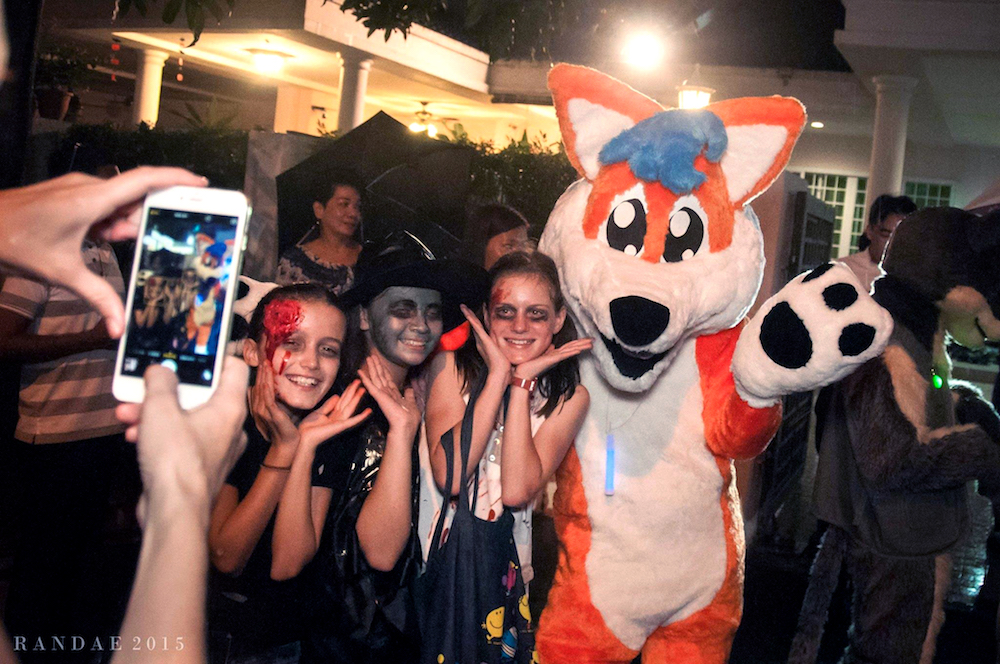
SG Furs also organises annual furry parties called “Furlays” held at a Changi Ferry Point chalet. But before you get too excited, these events are strictly paws-only (i.e. no non-furry heathens, purr-lease).
Local furries also occasionally get gigs at events promoting anything from animal adoption to McDonald’s happy meals, where they’re hired to act cute and make people feel warm-and-fuzzy inside. Snares Lion regularly volunteers at Pink Dot, where he works the crowd in a whimsical pink tutu.

For the lucky local furs who get to travel overseas to attend furry conventions (or “fur cons”) in countries like the USA, Japan, Australia or Malaysia, it’s an eye-opening experience, because these furry communities are much bigger and more established. Each fur con has a different theme and hosts myriad activities from expert furround tables (get it?) to dance competitions and furry pride parades.
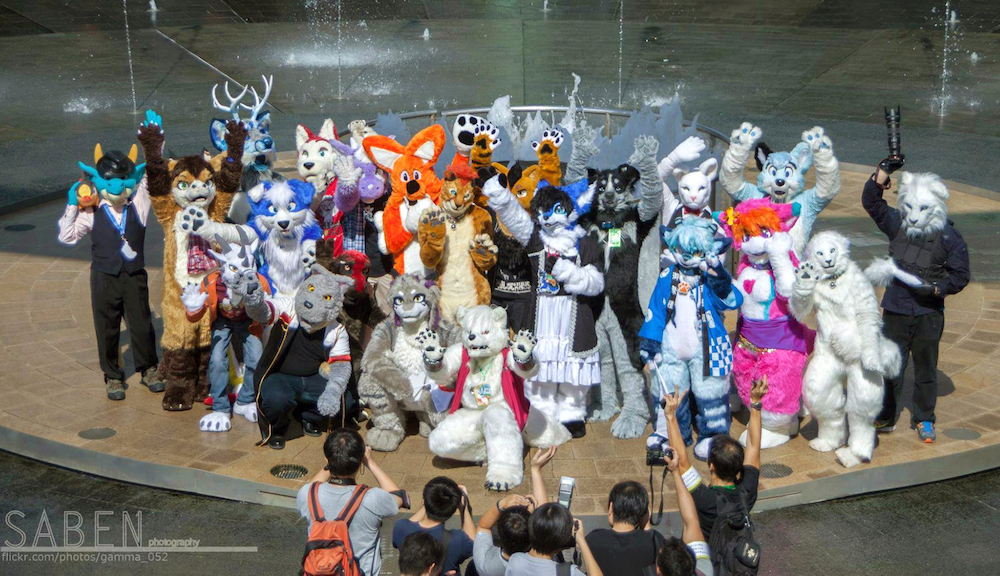
Important Asian fur cons include Furs Upon Malaysia (known as FURUM) held in Selangor every December since 2015 – last year’s theme was “Tropical Paradise”. There’s also the well-established Japan Meeting of Furries (JMoF), which held its fifth edition last month to the suspenseful theme of “Dial M for Murder”.
Hollud, who attended both the latest FURUM and JMoF, confesses: “I always suffer from PCD – Post Con Depression. In just a few days, you make friends for life. It’s such an intense experience, and by the end of it, you feel so sad to go.”
Free fur all
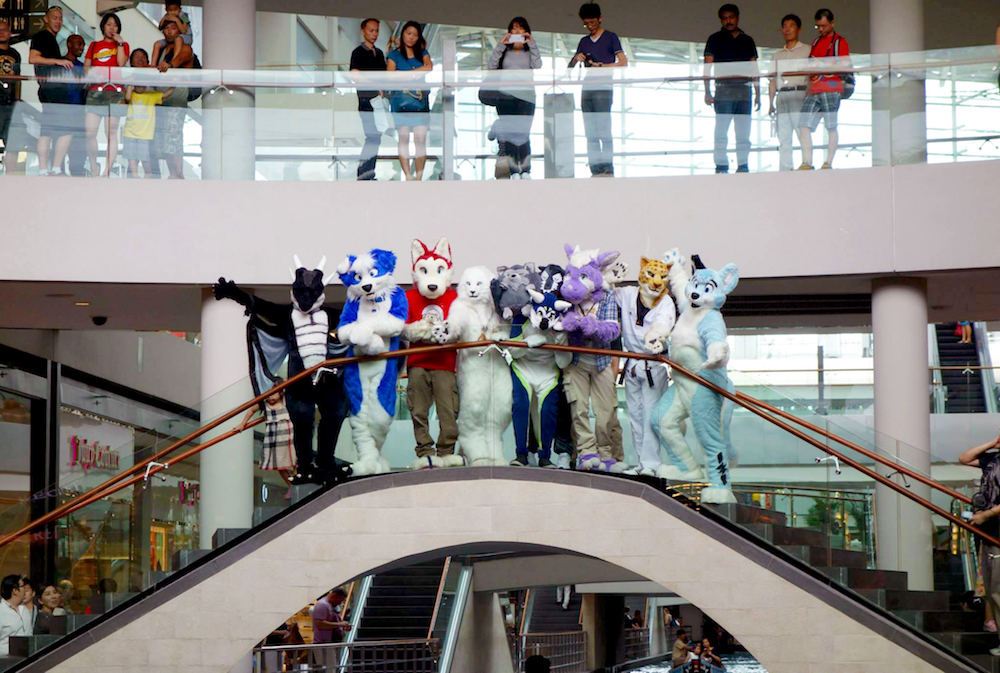
Furries are among us. They talk like us. They look like us. They pretty much are like us – they’re just living their lives in a way where they feel most comfortable in their own shell. They may be a little offbeat and socially awkward in an endearing otaku-kinda way, but their passion and irreverence speaks to their desire to express themselves creatively and celebrate their own alternative identities.
In a society that is too often weirded out by weirdness, that is a good thing. So let’s embrace the fact that our Lion City is also home to anthropomorphic lions, wolves, cats, dogs… and even a few dragons.
